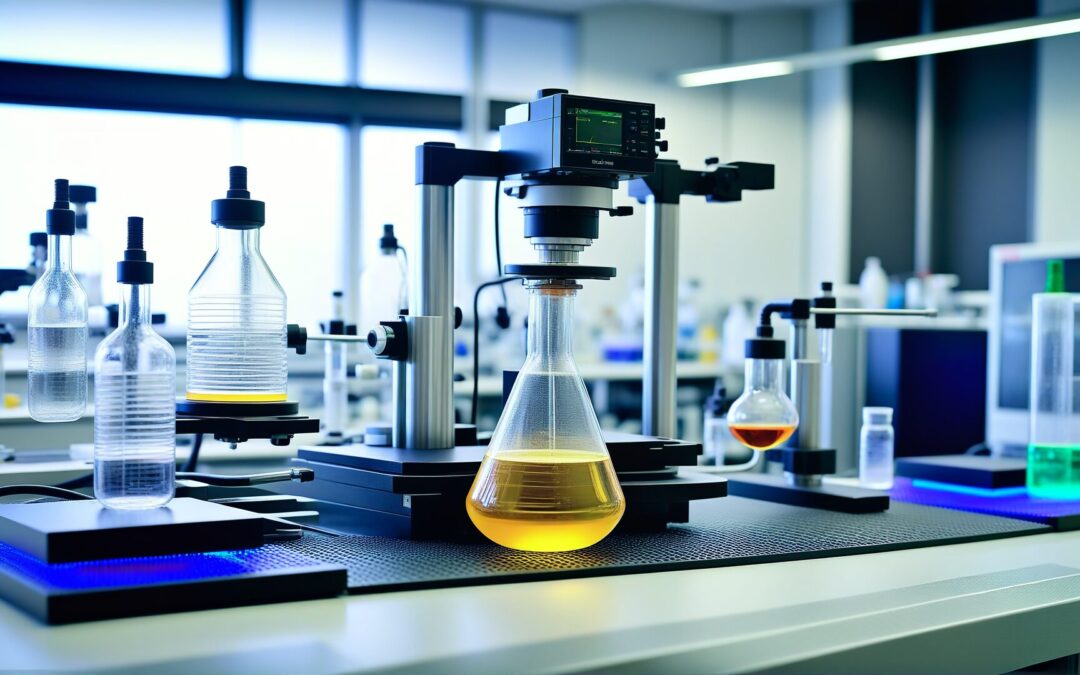By: Tim Loftus

You have a 5.0 mg/L phosphate standard that exceeds the upper test limit for the low-range phosphate analytical procedure. For it to be considered adequate for a QA/QC known-concentration sample you’ll need to dilute it to a 0.2 mg/L concentration. Can you easily and accurately make this dilution?
Or your 6 N sodium hydroxide solution is too strong to properly adjust the pH of BOD samples. Instead, a 1 N solution would give greater control. How much of the 6 N solution would you need to dilute to get a 1 N solution?
There are also many other instances in the wastewater laboratory where the dilution of an acid, a base, or a laboratory standard is required so that when the resulting solution is used in an analytical procedure, it will help you attain the most accurate result.
The formula for diluting these types of solutions is simple:
C1 × V1 = C2 × V2
Where C = Concentration, V = Volume. Concentration units must match.
Here are two examples using this formula:
#1) You want to make 250 mL of a 0.20 mg/L phosphate solution from a stock solution of 5.0 mg/L. How much of the 5.0 mg/L phosphate stock solution will you need to dilute to 250 mL so that the resulting concentration is 0.20 mg/L phosphate?
Put the information into the formula: (250 mL)(0.20 mg/L) = (X mL needed)(5.0 mg/L)
Then solve for X: (X mL needed) = (250 mL)(0.20 mg/L)/(5.0 mg/L) = 10 mL
Take 10 mL of the 5.0 mg/L phosphate solution and dilute it to 250 mL with distilled water (10 mL of stock solution with 240 mL water). The resulting solution will be 250 mL with a concentration of 0.20 mg/L phosphate.
#2) You have a 6.0 N sodium hydroxide (NaOH) solution from which you want to make only 75 mL of a 1.0 N NaOH solution.
Put the information into the formula: (75 mL)(1.0 N) = (X mL needed)(6.0 N)
Then solve for X: (X mL needed) = (75 mL)(1.0 N)/(6.0 N) = 13 mL
Take 13 mL of the 6.0 N sodium hydroxide solution and dilute it to 75 mL with distilled water (13 mL of 6N NaOH solution with 62 mL water). The resulting solution will be 75 mL with a concentration of 1 N sodium hydroxide.
This formula is good for almost any dilution needed in the laboratory, from phosphate and metal standards, metal salt concentrations for jar testing, and acids and bases for sample pH adjustment.
There are some exceptions to the accuracy of this type of dilution. When you use an acid or base for titration in analytical procedures, then you should standardize the acid or base after dilution to confirm its chemical strength. Acids and bases tend to lose some of their strength, especially low concentration ones, when exposed to the atmosphere or are diluted. However, using this formula to dilute the acid or base will get you very close to the desired concentration.
Don’t forget that a diluted solution cannot be any more accurate than the stock, or parent, solution. In fact, any form of dilution will lessen the accuracy of the final solution. So, to maintain the
integrity of a dilution, always be sure of the accuracy of the stock solution and make your measurements using type A glassware.
Safety Note: The general rule of thumb in making dilutions is to add the most concentrated solution to the least concentrated solution. This is especially important with acids and bases. Adding water to a concentrated acid may boil and splatter the mixture. Instead, by adding the concentrated acid or base to water, the heat dissipates in the water reducing or eliminating boiling or splattering. As always, wear safety glasses, gloves, and a lab coat when making dilutions.
The information in this article is very general. As usual, check your federal, state, and local regulations. You may have additional regulations or requirements that you must meet.
References:
Standard Methods for the Examination of Water and Wastewater 23rd edition 2017, part 1010 Introduction, section 1010 D. Dilution/Concentration Operations.
NEWEA Formula/Conversion Table for Lab Analyst Exam
May 20, 2024
Related Articles
Significant Digits
Significant Digits By: Tim Loftus
Rounding Numbers
Rounding Numbers By: Tim Loftus


